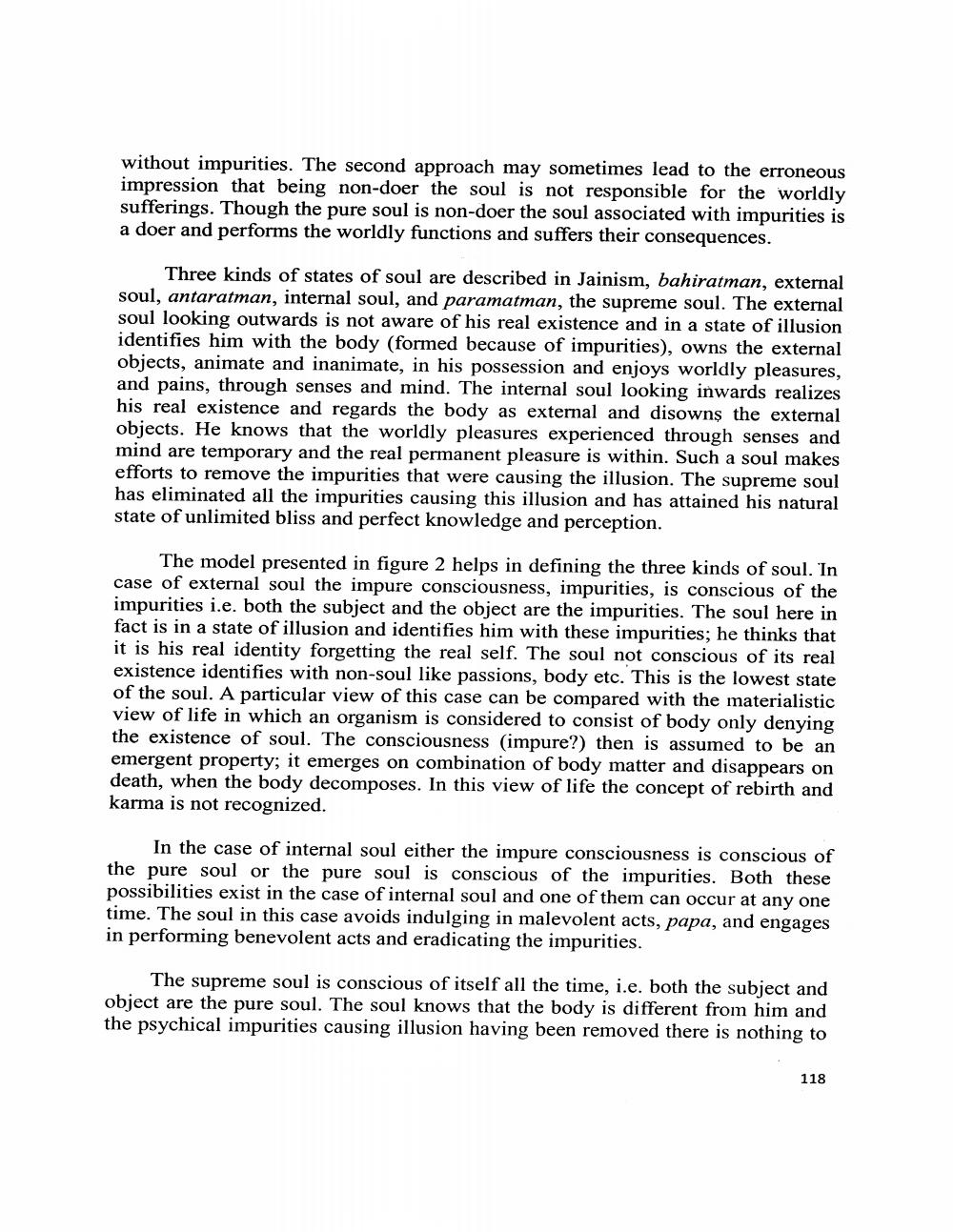________________
without impurities. The second approach may sometimes lead to the erroneous impression that being non-doer the soul is not responsible for the worldly sufferings. Though the pure soul is non-doer the soul associated with impurities is a doer and performs the worldly functions and suffers their consequences.
Three kinds of states of soul are described in Jainism, bahiratman, external soul, antaratman, internal soul, and paramatman, the supreme soul. The external soul looking outwards is not aware of his real existence and in a state of illusion identifies him with the body (formed because of impurities), owns the external objects, animate and inanimate, in his possession and enjoys worldly pleasures, and pains, through senses and mind. The internal soul looking inwards realizes his real existence and regards the body as external and disowns the external objects. He knows that the worldly pleasures experienced through senses and mind are temporary and the real permanent pleasure is within. Such a soul makes efforts to remove the impurities that were causing the illusion. The supreme soul has eliminated all the impurities causing this illusion and has attained his natural state of unlimited bliss and perfect knowledge and perception.
The model presented in figure 2 helps in defining the three kinds of soul. In case of external soul the impure consciousness, impurities, is conscious of the impurities i.e. both the subject and the object are the impurities. The soul here in fact is in a state of illusion and identifies him with these impurities; he thinks that it is his real identity forgetting the real self. The soul not conscious of its real existence identifies with non-soul like passions, body etc. This is the lowest state of the soul. A particular view of this case can be compared with the materialistic view of life in which an organism is considered to consist of body only denying the existence of soul. The consciousness (impure?) then is assumed to be an emergent property; it emerges on combination of body matter and disappears on death, when the body decomposes. In this view of life the concept of rebirth and karma is not recognized.
In the case of internal soul either the impure consciousness is conscious of the pure soul or the pure soul is conscious of the impurities. Both these possibilities exist in the case of internal soul and one of them can occur at any one time. The soul in this case avoids indulging in malevolent acts, papa, and engages in performing benevolent acts and eradicating the impurities.
The supreme soul is conscious of itself all the time, i.e. both the subject and object are the pure soul. The soul knows that the body is different from him and the psychical impurities causing illusion having been removed there is nothing to
118




